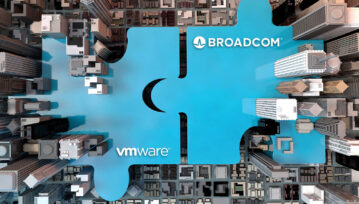Public, Private, and Hybrid Cloud – Which One is Right for Your Business?
Connectria
Author
Date
June 21, 2022

Sometimes, managed service providers forget that not everyone lives in our world. So, if you’re not up to speed on all things cloud, then you’re in the right place. We recognize that many business leaders don’t yet have a full understanding of the cloud and we’re here to help.
Public cloud. Private cloud. Hybrid cloud. First, making sense of these concepts and configurations is necessary if your small, midsized, or even enterprise business is going to get the most out of your cloud investments.
In this article, we’ll offer examples of public, private, and hybrid clouds. In doing so, we hope to provide a foundational understanding, not just of what is available for your business, but of how each different type of cloud deployment can be used so you can find the right solution for your business.

Public Cloud: Examples and Use Cases
The public cloud is a cloud deployment model in which services are delivered over the public Internet. Popular public cloud providers include Amazon Web Services (AWS) and Microsoft Azure. When you use a public cloud service, you don’t need to invest in hardware or software—you simply access the service via the Internet. Some of the most popular public cloud services include:
- Infrastructure as a Service (IaaS) – IaaS is a form of public cloud computing that delivers computer infrastructure. This includes servers, storage, networking, and data center space—on an on-demand basis. IaaS services are typically charged on a pay-as-you-go basis.
- Platform as a Service (PaaS) – PaaS is a public cloud computing model in which a service provider delivers a platform for developing, testing, deploying, and managing applications in the cloud. Common features of PaaS solutions include web hosting, database management, and application development environments.
- Software as a Service (SaaS) – SaaS is a public cloud computing model in which software applications are delivered on an on-demand basis to customers over the Internet. Customers can access SaaS applications—such as CRM or office productivity suites—via a web browser or mobile app.
Some public cloud services are designed for general use, while others are geared toward specific workloads or industry verticals. For example, AWS offers a range of public cloud services for businesses of all sizes, while Azure has public cloud solutions specifically for healthcare and life sciences, financial services, and manufacturing.
Read our article: Key Business Benefits of Public Cloud
Private Cloud: Examples and Use Cases
A private cloud refers to cloud computing where services are delivered over a private network. A private cloud can be owned and operated by a single organization—such as an enterprise—or it can be managed by a service provider on behalf of an individual customer.
In a private cloud deployment, the customer has sole control over the environment. This includes control over the applications, data, and user access permissions. Also, this makes a private cloud an attractive option for companies with strict security and compliance requirements. Essentially, private clouds offer a number of benefits including increased security, improved performance, and reduced costs.
Ultimately, private cloud services can be delivered in a number of ways including on-premises (in a company-owned data center), off-premises (in a service provider’s data center), or via a hybrid deployment model.
Read our article: Public vs Private vs Hybrid Cloud – Everything You Need to Know.
Hybrid Cloud: Examples and Use Cases
A hybrid cloud is a cloud deployment model that combines public and private cloud solutions. In a hybrid cloud deployment, you can use public cloud services for some workloads and private cloud services for others. For example, your organization might use a public cloud IaaS provider for your development and test environments, while running your production environment in a private cloud.
Connectria’s IBM + AWS Hybrid Cloud brings the unique capabilities of IBM Power Systems servers to our data centers in close proximity to AWS. This allows for low latency direct connections between IBM i/IBM AIX systems and AWS. It also unlocks new possibilities for IBM workloads to leverage advanced data analytics, multi-region high-availability (HA) deployments, and other forms of augmentation with AWS cloud services.
Curious how this can work for your environment? There are several different ways but some of the most common that customers come to Connectria for are:
- Long-term replatforming strategy
- Augmentation of an existing platform
- Adding disaster recovery to an existing on-prem environment
While every environment is a little bit different, there are some commonalities. In the end, there are many different use cases for Connectria’s hybrid cloud solution and those listed above are just a few.
Understanding Different Cloud Configurations
Public, private, and hybrid cloud configurations can each be force multipliers for your business. However, this only happens if used appropriately for your unique business needs. Optimizing performance, security, and scalability is important for every business. The right cloud configuration can be the answer you’re looking for. The right infrastructure can accelerate growth and serve your customers as well as your employees and stakeholders.
At Connectria, our team of experts is here to help. We’ve worked with thousands of small, midsized, and enterprise businesses looking for the right infrastructure solution. Contact us below and we’ll walk you through the different cloud configurations so you can find the best one for your business.
Keep Reading
Prepare for the future
Tell us about your current environment and we’ll show you the best path forward.
Fast track your project. Give us a call.






